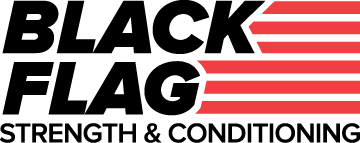Hey All!
We’re back with more blog posts coming your way! Today, I want to dive into an important topic—the seven types of strength. While most people think of strength as simply the ability to move heavy loads, there’s a lot more going on beneath the surface. Different types of strength tap into various muscle fibers, neural pathways, and even cardiovascular systems to help us perform specific activities. So let’s break down these types of strength and understand what they really mean.
1. Max Strength
Max strength refers to the highest amount of force your muscles can generate in a single effort. Think of it as your one-rep max on a deadlift, squat, or bench press. This type of strength involves a high recruitment of muscle fibers, particularly the fast-twitch fibers, which are designed for short, powerful bursts of energy. Max strength is essential for heavy lifting and is the foundation for developing other types of strength.
2. Relative Strength
Relative strength is how strong you are in relation to your body weight. For example, a gymnast might not be able to deadlift 500 pounds, but their ability to perform multiple pull-ups or hold their body weight in complex positions is an indicator of strong relative strength. It’s an important metric for athletes who need to move their bodies efficiently through space, like rock climbers, martial artists, and sprinters.
3. Power
Power is the ability to generate force quickly. It’s a combination of strength and speed. Olympic lifts like the clean and jerk or snatch are perfect examples of power exercises because they require moving heavy loads at high speeds. Power is crucial for explosive movements like jumping, sprinting, or throwing.
4. Speed Strength
Speed strength, also known as explosive strength, focuses on how quickly you can generate force. While power incorporates both speed and strength, speed strength leans more toward velocity than raw force. Sprinting, for example, relies heavily on speed strength as the body rapidly produces force to move as quickly as possible.
5. Starting Strength
Starting strength refers to your ability to overcome inertia and generate force from a standstill position. Think about trying to move a heavy object from a dead stop, like the initial phase of a deadlift or a bench press. Starting strength helps build momentum and is essential in activities like football, wrestling, and other sports where you need to move explosively from a stationary position.
6. Agility
Agility strength is a combination of speed, coordination, and strength, allowing your body to change direction efficiently and powerfully. In sports like basketball, soccer, or tennis, athletes need to quickly stop, pivot, and accelerate in different directions. Agility relies on your ability to control your muscles during rapid movements while maintaining balance.
7. Endurance
Endurance strength is the ability to maintain muscle contractions over an extended period. It’s not about how heavy you can lift but how long you can keep going. Marathon runners, triathletes, and rowers require high levels of endurance strength to sustain performance over long durations. This type of strength primarily engages slow-twitch muscle fibers and relies heavily on cardiovascular fitness.
Why Understanding These Types of Strength Matters
Each type of strength has its unique role, and understanding them can help you tailor your training to fit your specific goals. Whether you’re aiming to lift heavier, become more explosive, or improve your endurance, recognizing which type of strength you’re targeting is key. Strength isn’t just about how much weight you can move; it’s about how well your body adapts to different challenges.
Keep these seven types of strength in mind as you train, and always strive for a balanced approach to develop a well-rounded, resilient body.
Yours In Fitness,
CSCS | CFL3 | Fitness Specialist | Biomechanics Specialist | USAWL1
“Take care of your body. It’s the only place you have to live.”
Owner/Head Coach – Black Flag Athletics

